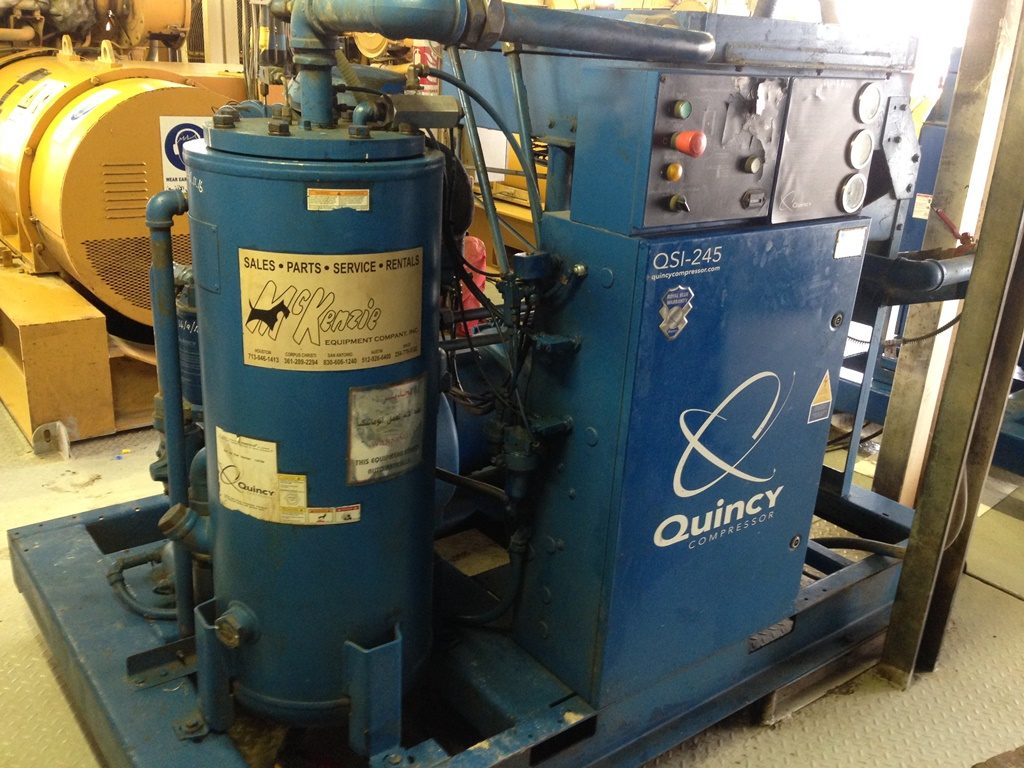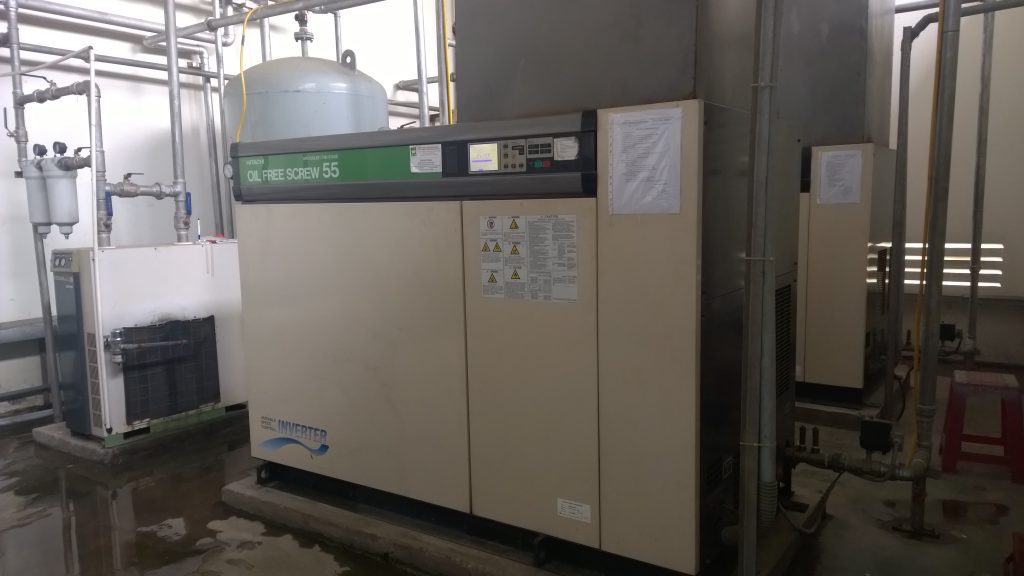The rotary screw compressor uses two rotors (helical screws) to compress the air. There's a 'female' rotor and a 'male' rotor. The rotors are of different shape, but fit each other perfectly.
When the rotors start turning, air will get sucked in on one side and gets 'trapped' between the rotors. Since the rotors are continuously turning, the air gets pushed to the other end of the rotors (the 'pressure side') and new fresh air gets sucked in.
Because this is a continuous process, this kind of compressor doesn't make a lot of noise; it runs quiet and smooth/
Here's more information about screw compressor elements.
Screw vs piston
Compared to piston-type reciprocating compressors, the screw compressor is much more expensive.
But screw compressors can run 24/7 and 365 days a year without any problems.
Plus, the capacity (liters of air per second) of screw compressors is generally much bigger compared to piston-type compressors.
When you need a lot of air in your workshop or factory, this type of compressor is usually the best choice!
Oil-free or lubricated
The rotary screw compressor is available in an oil-injected and oil-free versions. The basic principle is the same (the rotors 'push' the air to one side), but they are quite different machine.
The big difference is the design of the compressor elements, the part where the actual compression takes place. The oil-injected version needs oil to operate properly; the oil-free version doesn't need oil.
Because of this, the rotors used in oil-free screw compressors are of superior quality with very little space in between them. They do not touch each other though; otherwise they would wear-down too quickly. For this reason, they are a lot more expensive.
Oil-injected models are by far the most common of screw-type compressors.
Oil-free models are used for specific special applications. I've mostly seen them on big factories like oil/gas or chemical refineries, big food factories or other places where the compressed air must be 100% oil-free (otherwise it could contaminate the food, product or chemical process).
Oil-injected rotary screw compressors
Oil-injected models are by far the most common of screw-type compressors.
How do they work? As its name implies: there’s oil injected in the compressor element (where the actual compression takes place), during the compression of the air. This oil is later removed by the oil separator, so we end up with clean compressed air.
Of course there’s a lot more to it, learn how an oil-injected rotary screw compressor works.
Although 99,9% of the oil stays inside the compressor, there is always a little oil that passes through the separator and leaves the compressor with the compressed air. This is called “oil carry-over”.
 Oil-injected rotary screw compressor
Oil-injected rotary screw compressor
Oil-injected screw compressors therefore don’t produce oil-free air and they can’t be used in places where oil-free air is needed.
But for most factories, workshops and machinery, the small oil-carryover of the compressor is not a problem. In fact, it helps to prevent again rust (inside the compressed air system) and helps the machines run smoothly.
Pros:
- Quiet operation
- High volume of air, steady flow.
- Lower energy cost (compared to piston-type compressors of the same size)
- Suitable for continuous operation (24/7)
Cons:
- Expensive compared to piston compressors.
- Not suitable for long stand-stills.
- Oil carry-over.
Learn about oil-injected rotary screw compressors
Oil-free rotary screw compressors
The basic workings are the same as the oil-injected screw compressor, only this time, there’s no oil, only air!
Because there’s no oil injected during compression, the compression is usually done in two stages.
If we would compress the air in one go from 1 to 7 bars, it would get really, really hot.
Stage one compresses the air to a few bars (say 2,5 bars). The air will be very hot at this time, so it flows through an inter-cooler first before entering the second stage. Stage two will compress the air further from 2,5 bar to the end-level, mostly 7 bar.
 Oil-free rotary screw compressor
Oil-free rotary screw compressor
Normally the two stages will be built on 1 gearbox, with one electro motor driving them at the same time.
Here’s more info on how an oil-free rotary screw compressor works.
If you need 100% oil-free air and lots of it, the oil-free rotary screw compressor is the way to go. Of course, it comes with a bigger price-tag, but if you really need 100% oil free air, there’s not really a choice.
Pros:
- 100% oil-free air
Cons:
- More expensive than oil-injected type
- Servicing/repairing more difficult, and more
expensive than oil-injected type - More noise than oil-injected compressors
